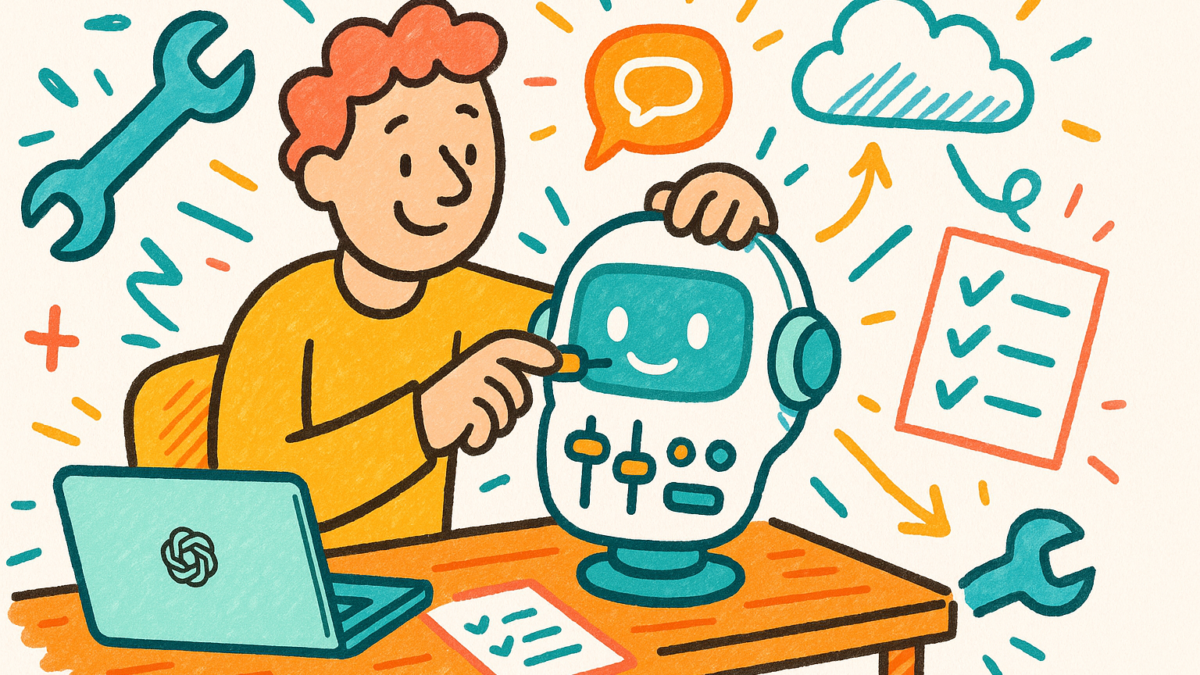What Is Custom GPT and How to Create One? A Complete Guide for 2025
Table of Contents
Introduction
Artificial intelligence is no longer just a futuristic concept — it’s part of our daily lives. From customer support chatbots to personal assistants, AI helps us work smarter and faster. Among the most exciting developments in AI is Custom GPT — a way to create AI assistants tailored for specific tasks, industries, or audiences.
But what exactly is a Custom GPT? How can you build one for yourself or your business? This blog breaks it down step-by-step.
What Is Custom GPT?
Custom GPT refers to a personalized version of OpenAI’s GPT (Generative Pre-trained Transformer) models, configured to follow specific instructions, tone, or behavior that you define.
Unlike standard GPT models that respond generically, a Custom GPT is:
- Trained on your unique data or prompts (without needing coding)
- Configured to serve a specific purpose — e.g., legal assistant, HR recruiter, tech support bot
- Branded or styled to reflect your business’s voice or needs
Custom GPTs are part of OpenAI’s offering through ChatGPT Plus, Team, or Enterprise plans and can be set up without writing code. Think of it as building your own AI co-worker!
Why Create a Custom GPT?
Custom GPTs offer benefits that a general AI model can’t match:
- Consistency: Maintain your brand’s tone and guidelines across AI interactions.
- Productivity: Automate repetitive queries, reports, or tasks.
- Accuracy: Program the AI to stay within the scope of your industry knowledge.
- Scalability: Support more customers or internal teams without increasing manual workload.
Whether you’re a startup founder, marketer, developer, or teacher — a Custom GPT can help you supercharge workflows.
How to Create (Step-by-Step)
Access ChatGPT’s Custom GPT Builder
- Visit chat.openai.com
- Ensure you’re on a ChatGPT Plus, Team, or Enterprise plan
- Navigate to the “Explore GPTs” tab
- Click “Create a GPT”
Describe Your GPT’s Purpose
The builder starts with a conversational setup. Example prompt:
💬 “I want to create a Custom GPT that acts as a fintech analyst, providing market summaries, answering basic financial questions, and sharing fintech trends.”
This description shapes how your GPT will behave.
Additionally Read: The Evolution of Ghibli-Style Art with AI: How GPT and Grok AI Are Transforming Animation
Set Custom Instructions
You can now guide your GPT’s tone, expertise level, and style. Examples:
- “Always answer in a formal, professional tone.”
- “Provide responses suitable for non-technical audiences.”
- “Add a CTA at the end of every response inviting users to visit my website.”
Upload Reference Files (Optional)
If you have documents, FAQs, style guides, or product manuals:
- Upload them into the builder
- Your GPT will reference these files to answer accurately
This is ideal for internal tools, knowledge bases, or customer service bots.
Configure API (Advanced, Optional)
For more complex tasks, like pulling live data or interacting with other apps:
- Connect your GPT to APIs using the builder
- Example: A stock GPT linked to real-time financial APIs
Test Your GPT
Before making it public or sharing internally:
- Run queries and check responses
- Adjust instructions if needed
- Ensure the AI sticks to your guidelines
Publish or Share
Once happy:
- Choose to keep the GPT private, shared with specific users, or public on the Explore GPTs directory
- Share the link with your team, customers, or audience
Best Practices for Creating a Custom GPT
- Keep instructions clear and simple
- Regularly review outputs to ensure alignment
- Update reference files as your data evolves
- Monitor user feedback and iterate
Examples of Custom GPT Use Cases
- FinTech: AI financial advisor for clients
- HR: Automated resume screener
- Education: Custom tutor for specific subjects
- Marketing: AI copywriter for product descriptions
- Customer Support: 24/7 chatbot trained on your knowledge base
Final Thoughts
Custom GPTs are a powerful tool to harness AI for personal, business, and enterprise needs in 2025. You don’t need to be a programmer — just have a clear goal and the right guidance.
By creating a Custom GPT, you can bring automation, consistency, and intelligence to your daily workflows like never before.





